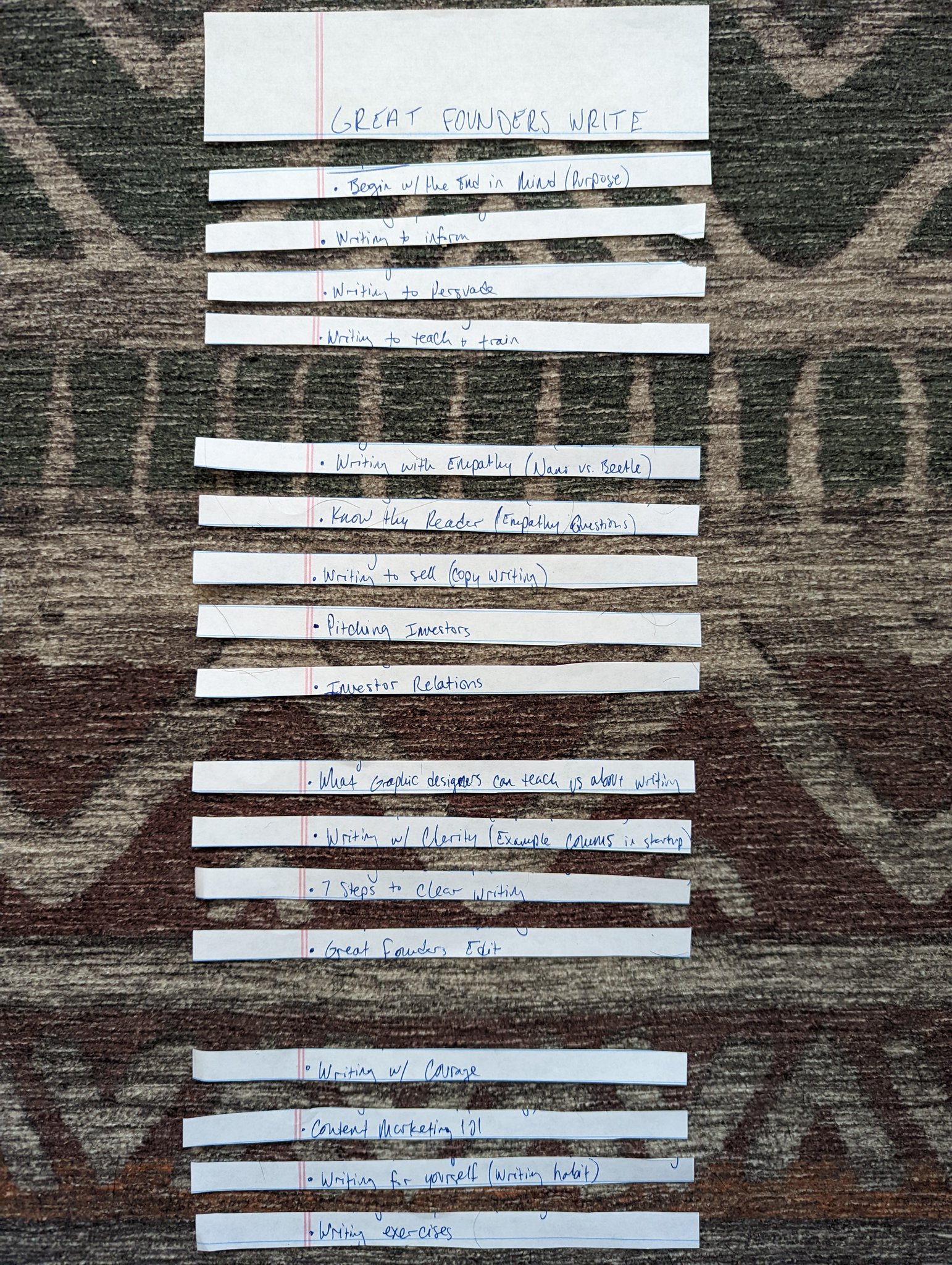Thread
“The first draft of anything is shit.”
–Ernest Hemingway (allegedly)
Here's a 5-step editing process to turn that 💩 into gold... used by professional editors like me:
–Ernest Hemingway (allegedly)
Here's a 5-step editing process to turn that 💩 into gold... used by professional editors like me:
💡 Step 1: Concepting
Most writers dump facts and figures into a doc and call it a blog post (or Twitter thread).
But great writers help their readers see the big picture.
Most writers dump facts and figures into a doc and call it a blog post (or Twitter thread).
But great writers help their readers see the big picture.
This is called concepting:
Tying your stats and stories into a cohesive narrative.
So what are your really trying to say? What's the main takeaway for your reader? WHY are you writing in the first place?
Tying your stats and stories into a cohesive narrative.
So what are your really trying to say? What's the main takeaway for your reader? WHY are you writing in the first place?
No amount of editing can fix a broken concept.
Get clear on your big idea before moving on to Step 2.
Get clear on your big idea before moving on to Step 2.
🗺️ Step 2: Structure
Your concept is crystal clear.
Now, what’s the most interesting and effective it way to share it with your reader?
Your concept is crystal clear.
Now, what’s the most interesting and effective it way to share it with your reader?
Start with the introduction.
Does it pull the reader in? Are you creating tension or evoking an emotion?
Pro tip: Learn the principles of copywriting to write better intros.
Does it pull the reader in? Are you creating tension or evoking an emotion?
Pro tip: Learn the principles of copywriting to write better intros.
Next, look at the body of your writing.
Don't just list one argument after the next. There needs to be a logical flow.
Outlining is the best way to improve structure.
Optional: Write each section on a piece of paper and move the pieces around like a puzzle. (ex: my book)
Don't just list one argument after the next. There needs to be a logical flow.
Outlining is the best way to improve structure.
Optional: Write each section on a piece of paper and move the pieces around like a puzzle. (ex: my book)
✏️ Step 3: Line Editing
If concept is the skelaton and structure is the muscle...
Line editing is where you trim the fat and get lean.
If concept is the skelaton and structure is the muscle...
Line editing is where you trim the fat and get lean.
Review each paragraph, sentence, and word. Ask yourself:
- Is it necessary? (Hint: If you’re not sure, cut it)
- Is it clear?
- Is it interesting?
- How can it be simpler?
- Is it necessary? (Hint: If you’re not sure, cut it)
- Is it clear?
- Is it interesting?
- How can it be simpler?
Your draft should be shorter (sometimes MUCH shorter) after line editing.
This can hurt, but it's a sign of progress.
Cut words, sentences, and even entire paragraphs that don’t ADD to the story.
This can hurt, but it's a sign of progress.
Cut words, sentences, and even entire paragraphs that don’t ADD to the story.
🧐 Step 4: Copyediting
Grammar. Spelling. Word choice.
Copyediting is what most people think when they hear the word “editing.”
Grammar. Spelling. Word choice.
Copyediting is what most people think when they hear the word “editing.”
Tools like Grammarly are useful for copyediting, but don’t over-rely on them.
Grammarly won't help you refine your concept, structure your argument, or determine what's necessary and what to cut.
Grammarly won't help you refine your concept, structure your argument, or determine what's necessary and what to cut.
(Side note: If you catch a copywriting mistake after publishing, don’t sweat it.
Not the end of the world.
As they say, those who matter don’t care, and those who care are assholes anyway.)
Not the end of the world.
As they say, those who matter don’t care, and those who care are assholes anyway.)
✅ Step 5: Proofreading and formatting
Proofreading ensures your writing looks good in its final form.
Check your sub-headers, line spacing, and overall *look* of your piece.
If you notice large blocks of text, try to break them up.
Proofreading ensures your writing looks good in its final form.
Check your sub-headers, line spacing, and overall *look* of your piece.
If you notice large blocks of text, try to break them up.
Finally, it's time to publish! Congrats! 🥳🥳🥳
Great writing is made through editing. But you don't need to be a pro editor to d
With this process (and enough time + focus), you can turn any 💩 draft into gold.
Great writing is made through editing. But you don't need to be a pro editor to d
With this process (and enough time + focus), you can turn any 💩 draft into gold.
If you found this post valuable, follow me @BenjaminPutano for more on writing and book publishing for entrepreneurs.
Help me spread the word by commenting below or RTing the first tweet:
Help me spread the word by commenting below or RTing the first tweet:
The next Great Founders Write cohort kicks off August 12!
Join a community of founders to build your audience and become a more confident writer:
Learn more 👇
greatfounderswrite.carrd.co/
Join a community of founders to build your audience and become a more confident writer:
Learn more 👇
greatfounderswrite.carrd.co/
Bonus: @stewfortier just shared Foster's editing guide with me. Very similar process (and explained in greater detail):
blog.foster.co/editing-guide/
blog.foster.co/editing-guide/
"But Ben," you're saying, "I don't know what to write about in the first place!"
Got you👇
Got you👇
